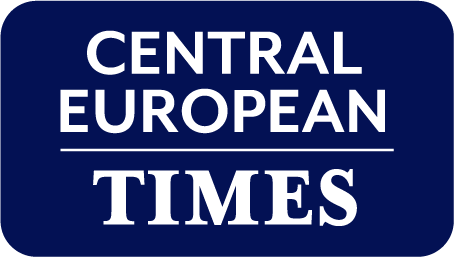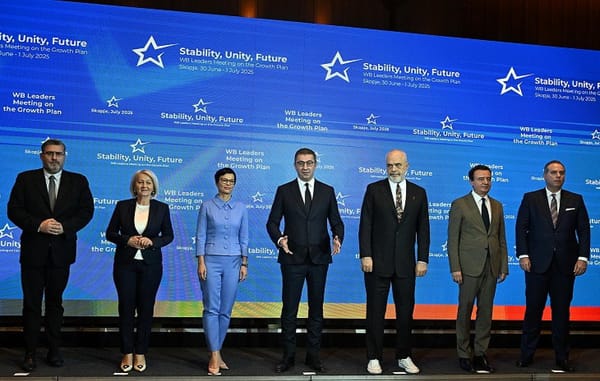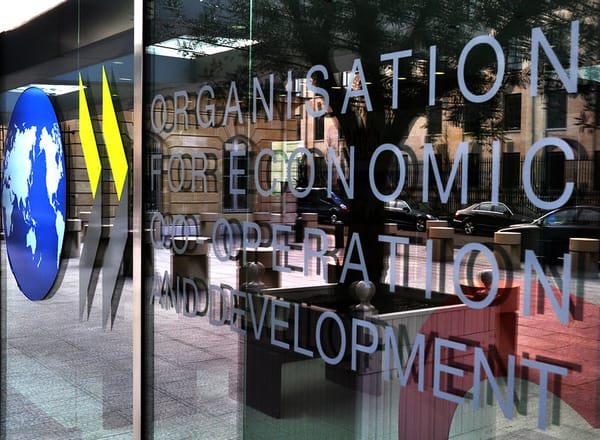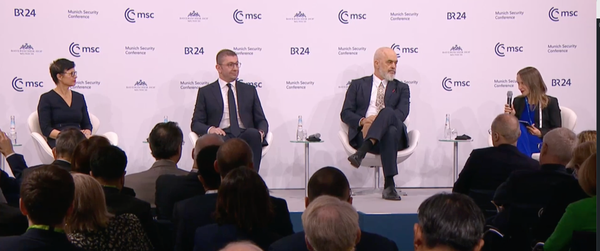
Poland leads CEE on media subscriptions - Reuters institute report
Digital news consumption in Central and Eastern Europe (CEE) is transforming, driven by evolving audience habits, technology adoption, and growing mistrust in traditional media, according to Reuters Digital News Report 2024.
Internet penetration and smartphone usage have enabled a rapid shift online, but challenges related to declining trust in news persist across CEE, according to the UK-based Reuters institute, which is headquartered at Oxford University.
From Albania to Poland, audiences are embracing digital-first habits, but misinformation and limited willingness to pay for news complicate the picture.
Baltics lead on trust levels
CEE’s digital news landscape sees Estonia and Lithuania lead in trust and innovation, while others, such as Slovakia and Hungary, struggle with low trust and high exposure to misinformation.
Social media remains central in CEE, which has meant challenges in fostering sustainable, credible journalism. As audiences embrace digital-first habits, Reuters argues, CEE media must adapt to evolving expectations while addressing trust deficits and monetisation challenges.
CEE audiences remain reluctant to pay for online news, with fewer than 15% of respondents subscribing to digital publications in most countries. Economic constraints and the prevalence of free content contribute to the slow adoption of paywalls, posing challenges for the sustainability of quality journalism, the Reuters institute found.
Trust in news hits historic lows in Czechia, Slovakia
The Visegrad Four countries (Poland, Czechia, Hungary and Slovakia) have experienced surges in misinformation, often amplified by social media algorithms. Hungary and Romania have reported high exposure to fake news campaigns, many linked to political narratives or external actors. Efforts to combat disinformation, including fact-checking initiatives and media literacy programs, are gaining traction but face obstacles in achieving widespread impact.
Trust remains an issue for CEE residents. In Czechia and Slovakia fewer than 35% of respondents said they mostly trust news. Political polarisation and concerns over fake news have further eroded confidence in traditional outlets, prompting moves to alternative digital sources.
Czechia boasts an internet penetration rate of 91%, with 77% of respondents consuming news online. Social media platforms are used by over half the population, but trust in news is just 34%. Subscription models remain relatively weak, with only 9% of Czechs paying for online content.
Meanwhile Slovakia has an internet penetration rate of 89%, with 77% of people consuming news online. Trust in news is among the lowest in the EU at 27%, and misinformation campaigns, particularly around political issues, remain a persistent challenge. Subscription adoption is minimal, with only 7% paying for content.
Rising preference for online platforms
Poland, Romania and Hungary all reported a sharp rise in digital news consumption, with over 70% of respondents accessing news primarily through smartphones. Facebook and TikTok remain key information sources, although this varies by age group. TikTok’s influence has grown significantly among users under 30, who are more likely to engage with video-driven news formats.
Poland leads CEE in digital transformation, with 92% internet penetration and 81% of people consuming news online. Trust in media stands at 39%, and subscription adoption is higher than the regional average, with 16% of users paying for digital news. Facebook and YouTube dominate as key platforms, though TikTok is gaining ground.
Romania has 84% internet penetration, with 78% of people accessing news online. Social media platforms, particularly Facebook, are used by 70% of the population for news. Trust in news is low at 30%, and exposure to misinformation remains a significant concern, particularly during political campaigns.
Hungary has seen rapid digital news consumption growth, according to the Reuters institute. In Hungary, 78% access news online. TikTok is rising in influence, particularly among younger demographics, while trust in newsstands is 37%. Hungary ranks among the EU nations most exposed to disinformation campaigns.
Misinformation abounds, subscription models struggle
While Facebook remains the leading platform for news across CEE, TikTok and Telegram are growing rapidly in influence. Estonia and Latvia show a marked increase in the use of Telegram with its encrypted communication features and appeal to younger audiences. Podcasts and newsletters are also gaining ground, particularly among educated urban populations.
Estonia leads the region in digital infrastructure, with 96% internet penetration and 80% smartphone ownership. Over 85% of Estonians access news online, and trust in media is relatively high at 51%. The country is also a leader in adopting podcasts and newsletters, with 21% of users engaging with these formats weekly.
In the case of Latvia, the Baltic country has an internet penetration rate of 92%, with 79% of respondents consuming news online. Trust in media is moderate at 45%, and the use of Telegram for news is growing, driven by its appeal among younger audiences. Podcasts and newsletters are gaining popularity, reflecting shifts in consumption habits.
Lithuania is a regional leaders in digital news consumption, with 88% of residents accessing news online. Trust in news is relatively strong at 48%, and the country has seen a 12% annual growth in podcasts and newsletters. Social media remains a key source for 61% of users.
Digital news consumption in CEE: trends, challenges
In the Balkans, south-east Europe, challenges remain in addressing political instability, economic disparities, and the slow pace of structural reforms. Digital news consumption is rising across the Balkans, reflecting broader trends in Europe. Internet penetration rates vary widely, with countries like Albania and Kosovo boasting over 80% connectivity, while others like Bosnia and Herzegovina lag slightly behind.
Social media platforms dominate as primary news sources, with Facebook and Instagram leading the way, particularly among younger demographics. Yet, trust in news remains low across the region, driven by concerns over political interference and the proliferation of misinformation.
Balkans consume news online, but trust levels low
Bulgaria has one of the highest rates of social media usage for news in the EU, with 80% of respondents relying on platforms like Facebook and TikTok. Internet penetration stands at 85%, but fewer than 10% of Bulgarians pay for online content. The country also struggles with high exposure to misinformation, ranking among the top EU nations for disinformation susceptibility.
In Albania, internet penetration reached 84% in 2024, with over 67% of the population relying on smartphones to access news. Social media platforms like Facebook dominate, but alternative apps like Instagram and YouTube are gaining traction among younger users. However, only 4% of Albanians pay for online news, reflecting economic barriers to adopting subscription models.
As for Croatia, 74% of residents of the Adriatic country consume news online, with mobile usage dominating at 68%. Podcasts and newsletters are increasingly popular, particularly among urban audiences. TikTok has grown in popularity, especially among younger users, but traditional outlets like HRT maintain strong reach due to their integration into digital ecosystems. Next-door in Serbia, 75% of the population consumes news online, with Facebook and Instagram leading as the primary sources. Internet penetration is 89%, but trust in media is low at 33%. The rise of alternative platforms like Telegram reflects growing skepticism toward traditional outlets.
Slovenia’s digital news consumption stands at 81%, with 84% internet penetration and strong mobile usage. Trust in news is higher than many regional peers at 43%, and the adoption of eco-friendly digital formats, such as newsletters, is growing among younger audiences. Greece’s digital transformation is marked by 82% of the population consuming news online, but trust in media remains among the lowest in Europe at just 19%. YouTube and Instagram are key platforms for younger audiences, while legacy media outlets struggle to adapt to shifting consumption habits.
In Bosnia and Herzegovina, 76% of people now consume news online, with Facebook being the leading source for over 60% of users. Despite the rise in digital engagement, trust in news remains low, with only 31% of respondents expressing confidence in media. Political bias in coverage continues to drive audience fragmentation. In Kosovo, 72% of the population consumes news online, with social media platforms like Facebook and Instagram playing a dominant role. Internet penetration stands at 91%, but trust in news is low at 28%, reflecting concerns over political interference in media.
In Montenegro, 69% of the population consumes news online, with Facebook and Instagram being the dominant platforms. Trust in news is low at 29%, reflecting growing polarization in the media landscape. Efforts to introduce subscription models have been slow, with fewer than 5% of users willing to pay for content. North Macedonia’s internet penetration stands at 86%, with 73% of respondents relying on social media for news. TikTok and Instagram are increasingly popular among younger users, while trust in traditional media remains low at just 25%.
As CEE embraces digital-first news consumption, the report argues, the industry must navigate issues of trust, monetisation, and the spread of misinformation. Collaboration between governments, media outlets, and tech platforms will be crucial to fostering a sustainable and credible CEE news ecosystem.
As the region looks toward further European integration, the Balkans face a balancing act between leveraging digital and economic opportunities and addressing systemic challenges. Strengthening governance, improving media literacy, and fostering cross-border cooperation will be key, the Reuters institute concludes.





